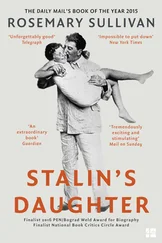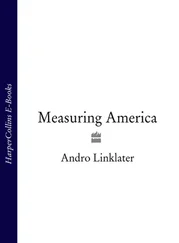It was the last act in the slow dissolution of the great force created to win independence that at its peak had a nominal strength of thirty- five thousand men, though closer to twenty-five thousand in practice. From the beginning of 1783, recruiting had gradually ceased, soldiers on two-and three- year terms did not have their enlistments extended, and men sent home on furlough were no longer expected to report back. Constantly pushed to make greater economies by a virtually bankrupt Congress, the army reduced regiments to companies, amalgamated five or six companies to make a new regiment, then demobilized that, too.
The approaching end was so obvious in March 1783 that officers grew anxious they were about to be returned to civilian life before Congress had fulfilled its promise to make up pay arrears or guarantee a pension for their service. In their main camp at Newburgh, New York, a document was circulated that urged them to threaten a strike unless their demands were met—“[Tell Congress] that though despair itself can never drive you into dishonour, it may drive you from the field.” For a brief ten days the heroic defenders of liberty took on the hideous mask of a standing army that could bully a democratic government into doing its will.
The threat was defused by a moment of pathos— Washington strained to read a speech of reproof to the assembled officers, then remarked as he put on a pair of spectacles that he had grown gray in service of the Revolution and was now going blind as well. The sight of their unshakable commander’s frailty took the sting from his listeners’ resentment, and when Congress belatedly agreed to pay them five years’ salary in place of a pension, the mutiny collapsed. But the Newburgh address’s call to officers to play upon “the fears of government” continued to haunt Congress.
Vainly Washington pleaded for a peacetime army of four professional regiments, supported by a militia trained to a uniform standard of discipline. Congress promised nothing. Even with the army reduced to the small number of men whose terms of enlistment ran into 1784, no move was made to authorize any kind of replacement. Attention focused on the historic drama of Washington’s closing words in the Maryland Senate chamber—“bidding an Affectionate farewell to this August body under whose orders I have so long acted, I here offer my Commission, and take my leave of all the employments of public life”— but in reality his army had already ceased to exist.
Repeated attempts to revive it failed. A proposed force of 900 men was rejected by Congress; one of 350 men suffered the same fate; the lowest point came on June 2, 1784, when Congress dismissed all but 55 artillerymen in West Point and another 25 in Fort Pitt, declaring, “Standing armies in time of peace are inconsistent with the principles of republican government, dangerous to the liberties of a free people, and generally converted into destructive engines for establishing despotism.”
This fear of a professional army extended beyond its physical power to the pervasive influence it exerted. When Jefferson criticized the retired officers’ association, the Society of Cincinnati, for being hierarchical, undemocratic, and creating “a distinction . . . between the civil & military, which it is for the happiness of both to obliterate,” he was also criticizing the values encouraged by the army in general.
Yet the institution could not help being political. In his farewell to his soldiers, Washington had dwelled on the army’s surprising power as a unifying force. “Who, that was not a witness, could imagine,” he asked, “that Men who came from the different parts of the Continent, strongly disposed, by the habits of education, to despise and quarrel with each other, would instantly become but one patriotic band of Brothers?” Under his command, the Continental Army had been the Union in action, a single force, a model of what the loose association of states whose representatives gathered in Congress could become if they really wanted to unite into a single nation. Since most states recoiled from such a goal, the army that Congress finally brought into being on June 3, 1784, was as small as it could be—a force of just seven hundred men enlisted for one year, drawn from the four middle states, and formally designated the First American Regiment.
This in effect was the army that Wilkinson rejoined in 1791. The only change had been made in response to Little Turtle’s victory. Echoing the Continental Army’s old complaints against citizen- soldiers, Harmar blamed the headlong flight of his troops on “the ignorance, imbecility, insubordination and want of equipment of the militia.” This presented an uncomfortable challenge to Congress’s stubborn belief that the nation could be defended by a well-regulated militia. But the commander of the Continental Army was now president, and western settlers were demanding adequate protection. Ideology had to give way to reality. Reluctantly Congress voted to raise a second regiment of professionals, thus creating the opening for a new lieutenant colonel to command it.
On November 7, the Senate confirmed Washington’s appointment of Wilkinson to command the Second American Regiment. His relief at being able “to resume the sword of my country” was unmistakable. “Ignorance of commerce” had brought nothing but disappointment and misfortune, he told friends in Philadelphia, but he knew about soldiering, and the rewards it could bring. “My views in entering the Military Line are ‘Bread & Fame,’ ” he confided with a flash of his old optimism, “uncertain of either I shall deserve both.”
Later that day, he duly took the oath of loyalty required of every American soldier, “to bear true allegiance to the United States of America, and to serve them honestly and faithfully, against all their enemies or opposers whomsoever.” Spain might not be an enemy, but she was an opposer. From now on, he was forsworn whichever course he followed. He had pledged allegiance to Spain, offered to serve in her army, and was now drawing her wage. He could continue to aid her— or he could abide by his oath to the United States. Either way, he would betray one of them.
11
A GENERAL AGAIN
IN THE FALL OF 1791, General Arthur St. Clair, governor of the Northwest Territory, led an army fourteen hundred strong northward out of Fort Washington, the gigantic red- walled fortress that protected Cincinnati’s thriving settlement. The intention was to construct a chain of forts from the Ohio River across the low, rolling land hunted over by the Miami and other western confederation tribes, to extend as far as modern Fort Wayne, Indiana. About four hundred regulars, including a company of artillery with eight guns, made up the core of the force, but the remainder were Kentucky militia, accompanied by almost six hundred wives, children, and camp followers. It was hoped that this slow-moving but overwhelming display of force, whose peaceful intentions were made plain by the families traveling with the soldiers, would convince the Indians to make a treaty that would establish new boundaries for their territory.
Although two forts, Hamilton and Jefferson, were constructed and garrisoned about twenty and forty miles from Cincinnati, the lack of aggression infuriated the Kentucky militia. They resented the discipline imposed on them and were, in the words of Congressman John Brown, “extremely averse to a co-operation with the regulars.” The division made itself felt on the night of November 3. When the army camped close to their final destination near the Wabash River, the militia chose to pitch their tents across a creek some distance from St. Clair and the regulars of the First and Second American regiments.
During the night, they were surrounded by about one thousand men of the Miami, Shawnee, Kickapoo, and other tribes of the western confederation led by Little Turtle of the Miami, and the Shawnee Blue Jacket. Although warned by Washington to be wary of ambush, St. Clair had had no fortifications erected, and when the first shot was fired before dawn, the surprise was total.
Читать дальше












